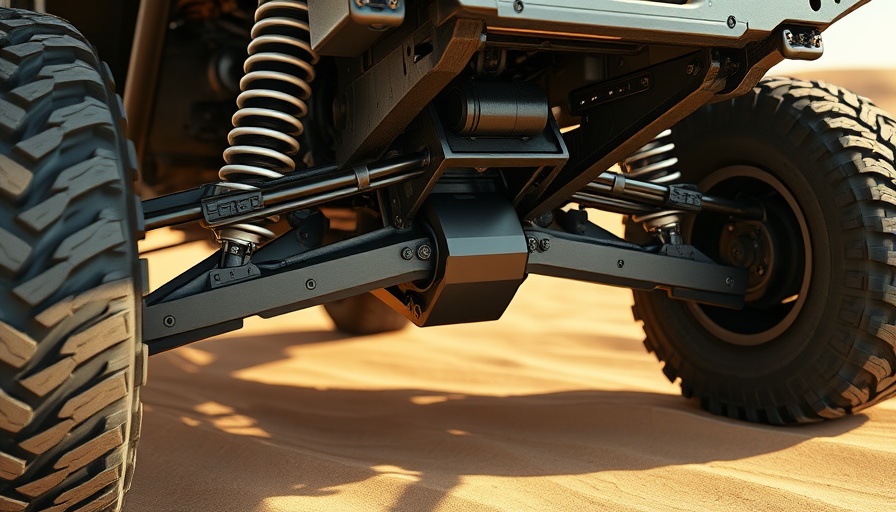
Understanding the Mechanics: How Trophy Truck Suspension Works
Trophy trucks are the kings of off-road racing, and a crucial component that sets them apart is their advanced suspension system. Designed for extreme durability and performance, the suspension of a trophy truck must absorb large bumps and impacts as they navigate rugged terrain, especially during events like the legendary Baja 1000. Understanding how this innovation works not only enhances appreciation for these machines but also informs potential enthusiasts about what goes into their design.
The Basics of Trophy Truck Suspension
A trophy truck’s suspension system consists of large shocks and springs that come into play as the vehicle traverses various obstacles on rugged trails. The primary aim? To keep the tires in contact with the ground, maximizing traction and maintaining control at high speeds.
Most trophy trucks employ a double A-arm suspension design. In this setup, two control arms create a triangular configuration around the wheel hub, allowing for a greater range of motion and superior handling. This feature is essential because off-road terrains are unpredictable, often requiring rapid adjustments in dynamics as the truck might suddenly drop into a ditch or hit a ramp at high speed.
Key Components of the Suspension System
Let's dive deeper into the major components of trophy truck suspension:
- Shocks: High-performance shock absorbers are vital for preventing excessive bounce and ensuring stability. Using a dual-shock system improves damping, allowing the truck to absorb shocks from bigger obstacles.
- Springs: Helical coil springs carry the weight of the truck while providing flexibility as the suspension moves. A higher spring rate is typically used for off-road use to handle increased loads and impacts.
- Controls Arms: The control arms are integral to managing tire movement and alignment during dynamic conditions. They help optimize tire angles for better traction.
- Bump Stops: These are safety features that limit suspension travel to prevent damage during extreme conditions.
The Role of Long Travel Suspension
Long travel suspension is the hallmark of trophy trucks. This design maximizes the distance the wheels can move vertically, offering greater shock absorption. This feature is crucial for maintaining speed over rugged landscapes, as it allows trucks to glide over obstacles while keeping all four tires planted on the ground.
Balancing Act: Spring Rates and Dampening
Finding the right spring rate and damping characteristics is a fine balancing act. Too soft a spring can lead to bottoming out, while too stiff may cause the truck to bounce excessively. Adjustments are often made when preparing a trophy truck for specific events. For example, the suspension setup for the Baja 1000, which involves rough desert landscapes, may differ significantly from setups designed for smoother terrain.
The Future of Trophy Truck Suspension Systems
As technology advances, the future of trophy truck suspension systems is geared toward integrating smart technology. GPS and telemetry systems could soon provide real-time data on terrain conditions and vehicle performance. This could help drivers make instant adjustments, enhancing both safety and performance.
Conclusion: The Thrill of Off-Roading with Advanced Technology
The sheer engineering marvel of trophy truck suspension systems showcases the blend of technology and adrenaline enthusiasts crave. Whether you're an avid racer, a weekend warrior, or just someone who appreciates the technical genius behind these beasts, understanding how trophy truck suspension works adds an extra layer of excitement to the experience. As innovations continue to be made in this field, push the limits of what these vehicles can accomplish—and who knows, it might be you behind the wheel of the next trophy truck taking on the Baja circuit.
Ready to delve deeper into the world of trophy trucks or maybe think about building your own? Harness the power of knowledge—explore your options today!
 Add Row
Add Row  Add
Add 




Write A Comment